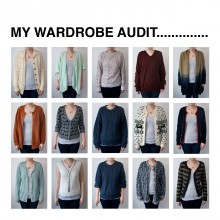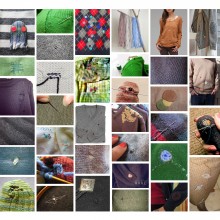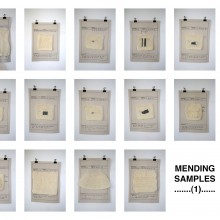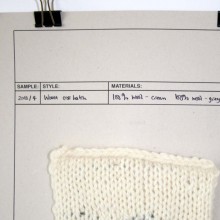
Knitting together - open and adjust
- London College of Fashion | February 11, 2016
We are living in a ‘disposable fashion’ society where clothing is readily replaced by new items and often discarded; I want to look at how and why hand-knitted garments are valued and what properties they possess that might encourage the wearer to treasure them.
There is a sense of tension in knitting; and there is huge potential for change built into the garment. This change develops and is released in different ways over time, depending on the different paths the garment takes in its life cycle. This ingrained potential is extracted when the wearer’s body shape stretches it, when washing habits felt or shrink it, when heavily repeated actions strain it on the elbows, cuffs, underarms, and when mending needs call for re-buttoning, and repairing of tears and moth holes. This can completely change the purpose, shape, fit and aesthetics of the garment over time.
I endeavor to look at a garment’s physical properties and beyond this to the wearer’s interaction with the garment; I want to know how this behaviour can encourage and facilitate the need to repair and cherish a hand knitted garment. I aim to discover the hidden understandings behind the restoration techniques in knitting, what the challenges associated with mending a knitted fabric are, how these properties are being used to the wearers advantage and how they enhance their personal knowledge of hand-knitted garments. I am going to experiment with the structure of knitting to develop and prolong a garment’s use by playing on the fabric’s natural characteristics and seeing how this can be utilised when exploring the development of garment construction.
Beginning with auditing and analysing my own knitted wardrobe habits, looking at the everyday wear and manipulation of the knitted structure that I would not usually look at, I hope to begin to understand the functions that I love about the pieces and why.
One of the most common problems associated with woolen garments are moth holes, the relationship between the wearer and their beloved hand knit can be tested when the dreaded moths invade. Do they invest in their garment and change it aesthetically with a visible mending technique or test their mending skills with an invisible darning method, I am going to begin to look into how people approach mending moth holes and tears and how this 'easy' mend can encourage the wearer to interact with their clothes and change its purpose with traditional techniques that sit in a modern context.
There is a sense of tension in knitting, I am beginning to look at hw this is built into the design of a garment, how it is released and changed over time and how this affects the relationship of the wearer with their garment.











 Twitter feed from
Twitter feed from